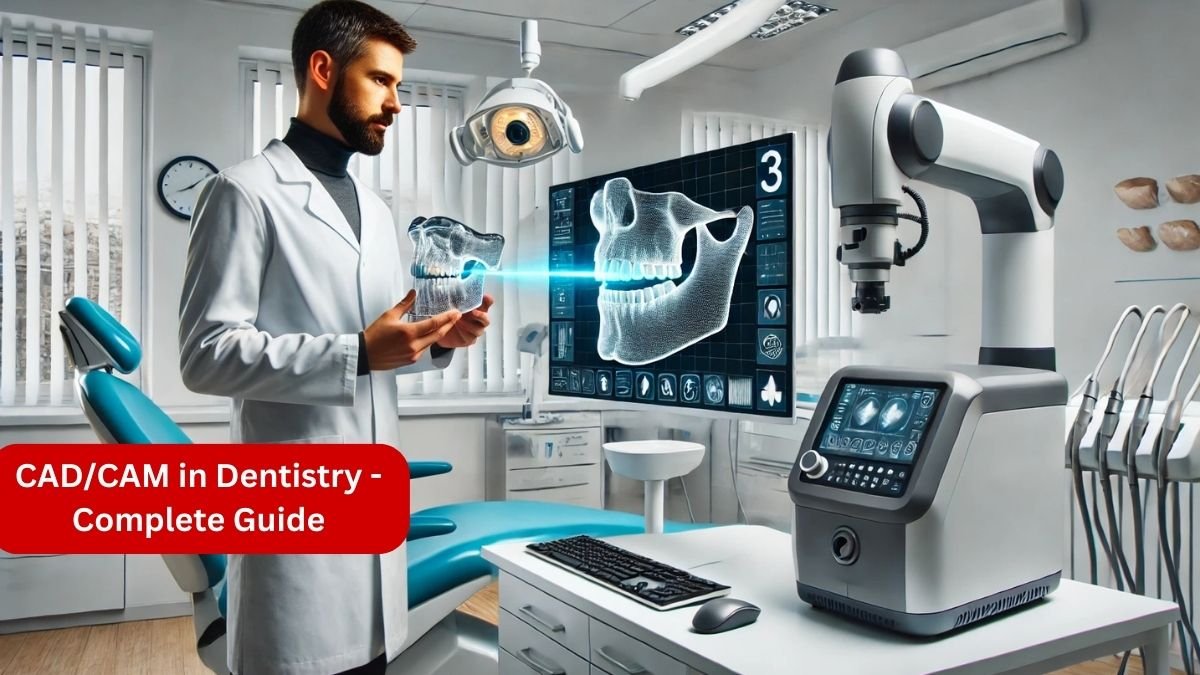Dentistry has changed a lot over the past few years. Thanks to digital technology, dental treatments are now faster, more comfortable, and more accurate than ever before. One of the biggest breakthroughs in this area is CAD-CAM dentistry. This modern technology has made dental procedures easier for both dentists and patients.
So, what exactly is CAD-CAM dentistry, and how is it changing the way dental care is delivered? Let’s explore this in simple, easy-to-understand language.
What Is CAD-CAM Dentistry?
CAD-CAM stands for Computer-Aided Design (CAD) and Computer-Aided Manufacturing (CAM). It’s a technology used to design and create dental restorations like crowns, bridges, veneers, and more.
In the past, making a crown or bridge involved several steps: taking messy impressions, sending them to a dental lab, waiting days or even weeks for the restoration to come back, and then scheduling another appointment to fit it. With CAD-CAM, this long process can often be done in just one visit.
Understanding CAD (Computer-Aided Design)
The CAD part involves using digital tools to design the dental restoration. Dentists use a small camera called an intraoral scanner to take a digital impression of your teeth. This means no more gooey molds that make many patients uncomfortable. The scanner creates a 3D image of your mouth, which can then be used to design a custom crown, bridge, or other restoration.
With this 3D model, dentists can see exactly where the restoration is needed, how it should fit, and how it should look. The digital model makes it easier to design something that looks and feels natural.
Exploring CAM (Computer-Aided Manufacturing)
Once the design is complete, the CAM process begins. This is where the restoration is made. The digital design is sent to a machine that mills or 3D-prints the final product. These machines are highly accurate and use strong, tooth-colored materials like ceramic or composite resins.
The finished product matches the design perfectly. It fits snugly into the patient’s mouth and looks just like a real tooth. Because of the accuracy, there is usually no need for many adjustments.
Benefits of CAD-CAM Dentistry
- One-Visit Treatments: The most obvious benefit is that you can often get a crown, bridge, or veneer in a single appointment. No need to come back multiple times.
- More Comfortable: Digital impressions are quick and painless. You don’t have to bite into trays filled with sticky material.
- Better Accuracy: The digital design and manufacturing process is very precise, which means better fitting restorations.
- Natural Look and Feel: The restorations made with CAD-CAM look very similar to your natural teeth. The materials used can be shaped and colored to match perfectly.
- Faster Recovery and Less Risk of Error: Because the fit is better, the treatment is more comfortable, and you are less likely to need future adjustments.
- Digital Records: All the data is stored digitally, making it easy to access for future reference.
Real-Life Example
Imagine you chipped a tooth before a big event. In the past, you’d need a temporary crown and wait days for the final one. Now, with CAD-CAM, your dentist can scan, design, mill, and fit your new crown all in one visit, and you’re ready to smile confidently again.
Popular CAD-CAM Systems
There are different systems that dentists use to perform CAD-CAM procedures. Two of the well-known ones are:
- 3M True Definition Scanner: This device is known for its high accuracy. It uses a video-based technology to capture clear 3D images. It’s comfortable to use and works well with different dental software and labs.
- Cadent iTero: This scanner uses a special imaging system that doesn’t require powder coating on teeth. It gives very detailed images and is easy for dentists to operate with voice and visual prompts.
Where CAD-CAM Is Used
- Crowns: These are tooth-shaped caps that cover damaged or weak teeth. CAD-CAM can make a crown quickly and accurately.
- Bridges: If you’re missing one or more teeth, a bridge fills the gap. CAD-CAM helps create a bridge that fits just right.
- Veneers: These are thin shells placed on the front of your teeth to improve appearance. They can be customized to look very natural.
- Implant Restorations: For people who have dental implants, CAD-CAM helps design the crown or denture that goes on top of the implant.
Steps in the CAD-CAM Process
Here is a step-by-step guide to what happens during a typical CAD-CAM dental procedure:
- Digital Scan: The dentist scans your teeth with an intraoral scanner. This takes only a few minutes.
- Design: The dentist uses software to design the restoration on the computer screen.
- Manufacture: The design is sent to a milling machine or 3D printer that makes the final product.
- Finishing Touches: The restoration is polished and colored if needed.
- Fitting: The dentist places the restoration in your mouth and checks the fit. If everything looks good, it is bonded to your tooth.
Points to Consider
While CAD-CAM has many benefits, it’s also important to know some limitations:
- Cost: The equipment is expensive, so some dental clinics may charge more for CAD-CAM restorations.
- Training Required: Dentists need special training to use these machines effectively.
- Material Choice: Some materials used in traditional labs may still be better for certain situations.
Conclusion
CAD-CAM technology is a major advancement in dental care. It allows dentists to work faster and more accurately, and it gives patients better results with less discomfort. As more dental clinics adopt this technology, getting dental work done will become an easier and more pleasant experience for everyone.
So, the next time your dentist says they use CAD-CAM, you can feel confident knowing that you’re getting some of the most advanced and patient-friendly care available today.
